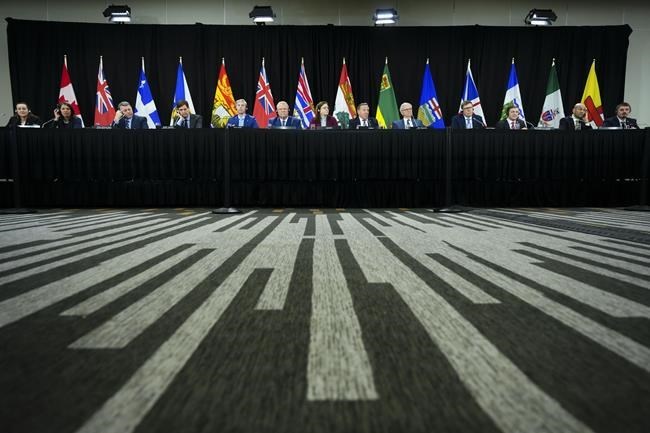OTTAWA — The federal government is aiming to lock in the equalization formula for payments to provinces until 2029, as part of an omnibus motion in Parliament that seeks to implement budget measures.
Some provincial politicians blasted the Liberals in 2018 after they used a budget implementation bill to bury plans to extend the current formula until 2024.
The latest promise of another five-year extension comes nearly 200 pages into a 400-plus page "ways and means" motion tabled in the House of Commons this week.
The government makes annual equalization payments to provinces based on their ability to raise revenues, meaning that the contributions are necessarily unequal across the board — unlike payments such as health transfers that are paid out on a per-capita basis.
Saskatchewan Premier Scott Moe has proposed changing the equalization formula to be paid out on a per-capita basis, but the idea has gained little traction federally since he first proposed it in 2018.
In a statement, Saskatchewan Finance Minister Donna Harpauer said the province raised concerns about equalization during a meeting between federal, provincial and territorial finance ministers earlier this year.
"A number of provinces wished to be further consulted, and it is disappointing that the federal government would move forward with these changes without further consultation," the statement said.
Harpauer said the province proposed a number of improvements to the way equalization payments are calculated, but none of the suggestions were addressed.
"It appears that these fundamental issues were not addressed, which again, is highly disappointing."
Quebec received $14 billion in equalization payments in the 2023-2024 fiscal year, followed by Manitoba, Nova Scotia, New Brunswick, Prince Edward Island and Ontario in amounts received from equalization payments in 2023-2024
The Alberta government is currently producing a policy paper on equalization following a 2021 referendum in which nearly 62 per cent of voters in the province agreed that Canada should remove equalization from the Constitution.
A statement from Premier Danielle Smith's office said details regarding the report on equalization "will be released in the near future."
Trevor Tombe, a professor of economics at the University of Calgary, says the equalization program is a focal point for concerns people have in Alberta.
"Many in Alberta, the government included, think about equalization as symbolic of other challenges in the federation," he said.
"It's fair to say the current premier would equate issues like pipelines and energy policy with equalization."
Smith took aim at equalization in a November address to the province, telling Albertans the federal government is funneling billions of tax dollars "into a black hole of federal bureaucracy and vote buying arrangements" in other parts of the country.
"These continual federal attacks on our economy and provincial rights cannot be allowed to continue," she said at the time.
Tombe said the case for significant reforms to equalization is getting stronger because economic pressures in different regions are growing more unequal, in part due to aging populations.
"We currently don't really have any fiscal arrangements that think hard about how to support regions that are aging much more than others," he said, pointing to the Atlantic provinces as an area where shifting demographics are creating challenges.
"The fiscal capacity of older regions might have some challenges keeping up and so we need to think about ways of supporting them and equalization is a natural place to do that."
Like many other federal funding envelopes, equalization payments have traditionally been decided over five-year cycles going back to the 1940s. The most recent significant change was following the 2008 financial crisis, when Ontario started qualifying for payments.
Since then, it has undergone minor, technical changes but no significant reforms.
If the current formula stays in place until 2029, it would be one of the longest periods of time the formula has gone without major changes.
This report by The Canadian Press was first published April 19, 2023.
David Fraser, The Canadian Press



